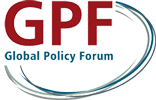Public-private partnerships (often referred to as PPPs) are increasingly promoted as a way to finance development projects. Donor governments and financial institutions, such as the World Bank, have set up multiple donor initiatives to promote changes in national regulatory frameworks to allow for PPPs, as well as provide advice and finance to PPP projects.
PPPs also feature prominently in the discussions around the post-2015 and the financing for development agendas. Currently, there is a strong push to increase the involvement of the private sector in the development arena and to promote PPPs as key tool to reach the soon to be agreed sustainable development goals.
This report shows that the last decade has seen a huge increase in the amount of money invested in PPPs in developing countries. From 2004-2012, investments in PPPs increased by a factor of six, from US$ 22.7 billion to US$ 134.2 billion. This has been driven by economic growth and thus the need for infrastructure development, but also by low interest rates in developed countries which has driven investors to ‘search for yield’ elsewhere. Although investments in PPPs fell in 2013 to US$ 84.4 billion, current estimates indicate that the developing world will experience a new wave of PPPs in the near future.
However, it is important to note that despite the promotion of PPPs, private finance only provides about 15–20 per cent of total infrastructure investment. The lion’s share is still provided by the public sector, and this situation is likely to continue. Therefore, questions remain about why so much focus is placed on the private sector rather than improving public sector delivery.
This report looks at the empirical and theoretical evidence available on the nature and impact of PPPs, and analyses the experiences of Tanzania and Peru, in country case studies carried out by Afrodad and Latindadd, respectively. It critically assesses whether PPPs deliver on the promises of their proponents and gives concrete recommendations for policymakers.
